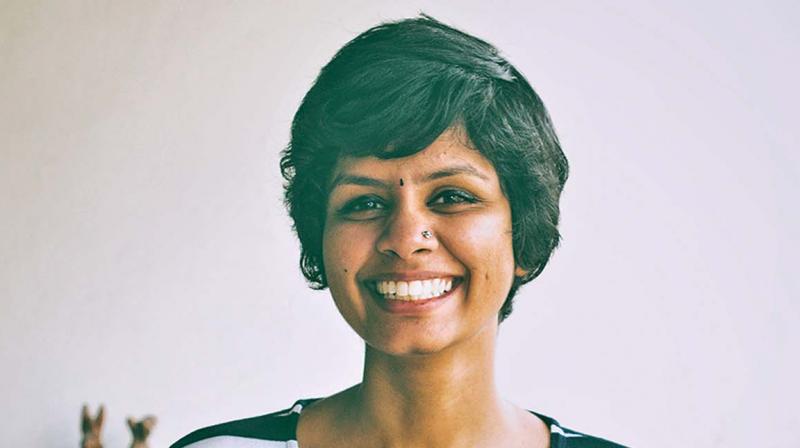Art that questions

Through the annual Instagram challenge called ‘36daysoftype’, this Delhi-based illustrator has been giving her take on feminism, and has been winning hearts across cyber space. Kruttika Susarla, a 25-year-old designer, is aiming to address some of the key misconceptions that are attached to feminism, and spreading information through the illustrations on the feminist movement in the world. In her sketches, A stands for androgyny, B for bodily integrity, C for continuous consent, D for Dalit womanist paradigm etc. Through these, there are many so-called conventions that Kruttika is fighting against.
“As a part of this Instagram challenge, illustrators, artistes and designers give their view on the alphabet and numbers. I was looking for ideas around feminism, as it is something that I’m interested in. I feel that on social media platforms especially, there’s a great misunderstanding of the word feminism. People assume that being a feminist is a negative thing, and that it implies women who hate men. I wanted to talk about all the aspects of what makes one a feminist, while addressing these misconceptions,” elaborates Kruttika.
The designer also feels that art contains power to surpass any boundaries. “Art does not have any barrier of language and it is is one of those few forms that can break through privileges. I think even if it were a written work, one has to be privileged to have access to books, and an education, to be able to read. In that sense, art can break through something like education that we take for granted. And, everyone gets connected and moved by art, making it one of the easiest mediums to reach out to people and get them talking,” the illustrator opines. On what she’d like her work to accomplish, Kruttika adds, “As an artist, I’d like to be able to start a conversation on certain things like the internalised misogyny, patriarchy that are so ingrained in us, that it becomes accepted. If in an advertisement, we see a woman being asked to cook,
we don’t think much about it, as it is accepted that a woman must cook. I’m doing the exact opposite here, I’m questioning the conventions.” “I am often asked why my illustrations have women who do not fit into the conventional definition of thin, and are often dark skinned, and if this is a conscious decision. That is one of the key aspects of my work — being body positive. Ideally, I’d like to reach a point where this question doesn’t come up at all,” the artist expresses, signing off.

